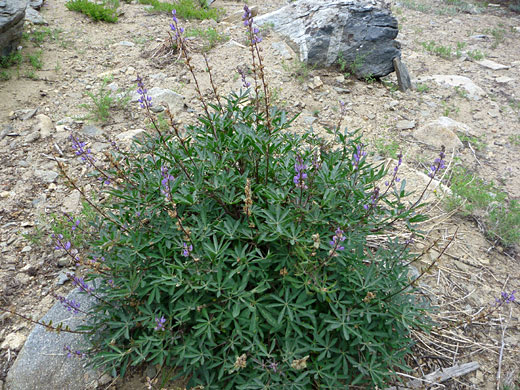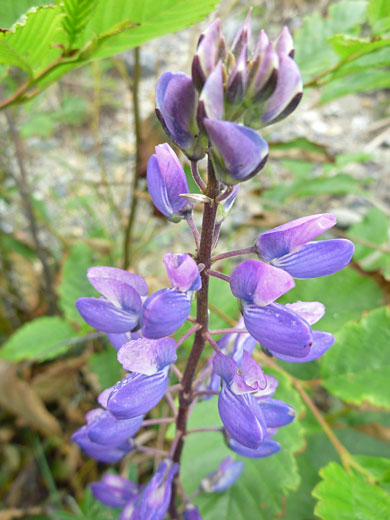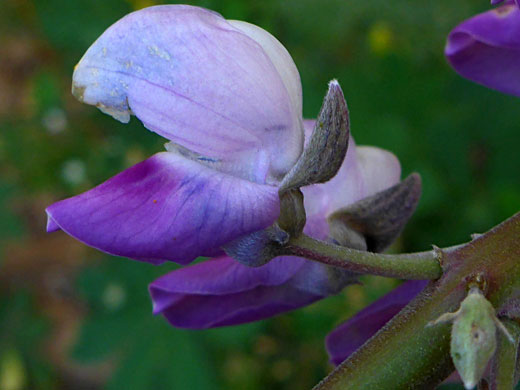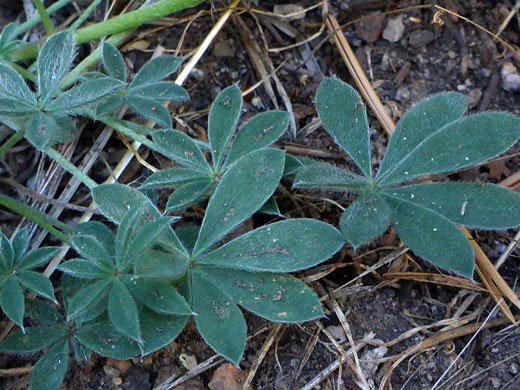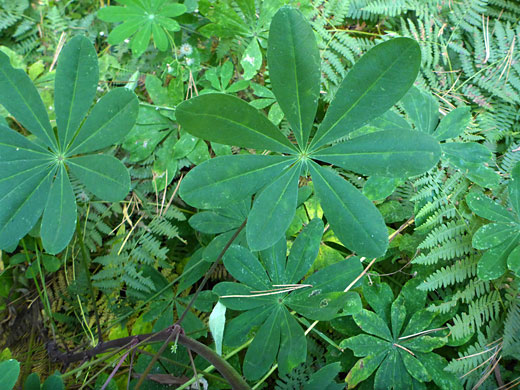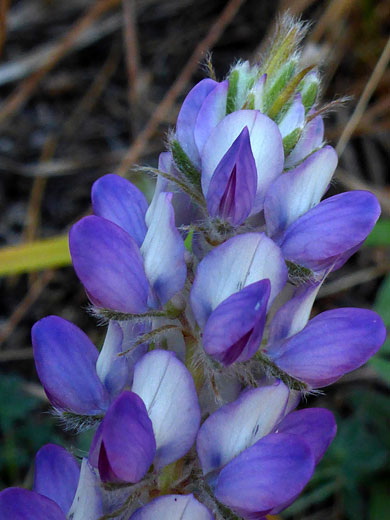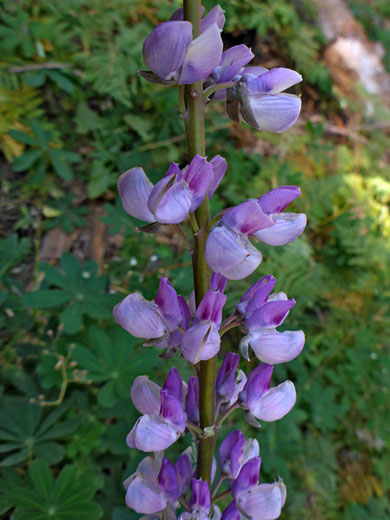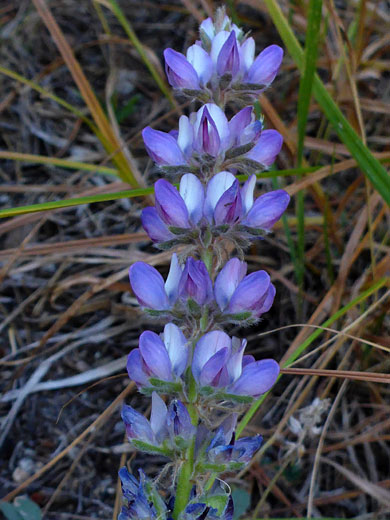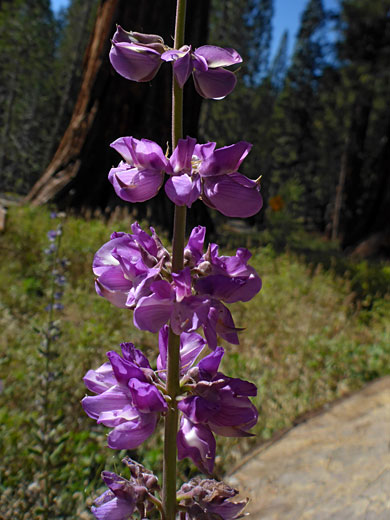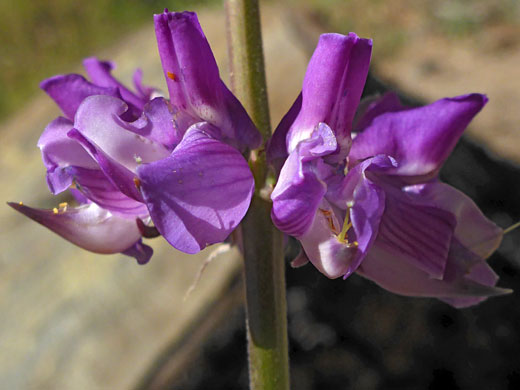Common name:
Broadleaf lupine
Family:
Scientific name:
Lupinus latifolius
Main flower color:
Range:
The Pacific states, and small areas of some states to the east
Height:
Up to 7 feet
Habitat:
Streambanks, wet meadows and other moist, mountainous locations; up to 11,500 feet
Leaves:
Divided into 5 to 11 broad leaflets, the largest up to 4 inches long
Season:
May to September
Although not always easy to observe, lupinus latifolius can be identified by the upper margin of the keep petal, which is hairless from the tip to the middle, and finely hairy below; similar species are either completely hairless, or hairy along the full length of the keel margin. Steams and leaves usually have a short hair covering, but may be hairless. Plants are large, up to seven feet tall, and form extensive clumps. The palmate leaves are also large, divided into leaflets up to four inches long and nearly one inch wide. The lower surface is more hairy than the upper.
The flowers are spread out along up to two feet of the top of the stems, and are often arranged in whorls. Flowers are attached by stalks around half an inch long, which have a bract at the base. Petals are colored variously white, purple or blue. The banner spot is white to pale yellow, becoming purple with age.
At least nine subspecies of lupinus latifolius are recognized (barbatus, columbianus, dudleyi, leucanthus, longipes, latifolius, parishii, viridifolius, wigginsii), differing mostly in hairiness and flower dimensions.
The flowers are spread out along up to two feet of the top of the stems, and are often arranged in whorls. Flowers are attached by stalks around half an inch long, which have a bract at the base. Petals are colored variously white, purple or blue. The banner spot is white to pale yellow, becoming purple with age.
At least nine subspecies of lupinus latifolius are recognized (barbatus, columbianus, dudleyi, leucanthus, longipes, latifolius, parishii, viridifolius, wigginsii), differing mostly in hairiness and flower dimensions.
All Contents © Copyright The American Southwest | Comments and Questions | Contribute | Site Map




